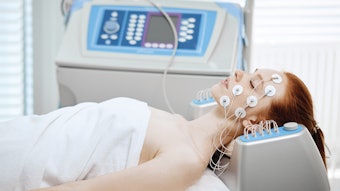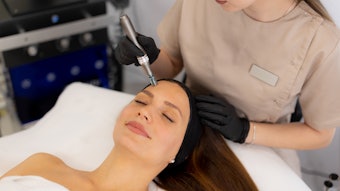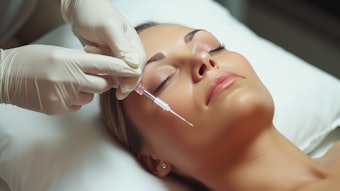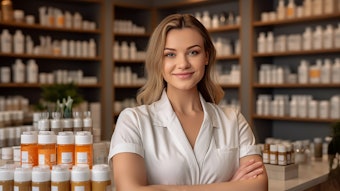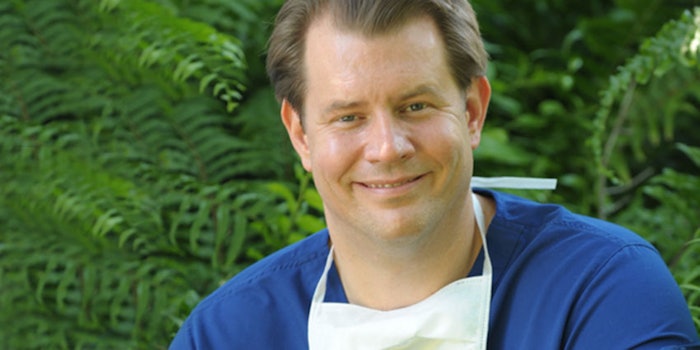
Alan Durkin, M.D., M.S., turned his plastic surgery business into a thriving medical spa—emphasis on the spa. Ocean Drive Plastic Surgery (ODPS) saw the benefits of stepping outside of the med spa norm, and integrating resort spa elements for a new way to practice esthetic medicine.
In an exclusive interview with Skin Inc., Durkin shared how ODPS transformed to tailor patient experiences while providing comprehensive care.
"We wanted to create a new sense of integration."
Durkin identified and visited 75 Florida spas—60% medical, 40% resort—that he considered above industry standard to gather research that was not available to him as a plastic surgeon. He found that many of the most hyped spas were just that—marketing hype with a lackluster experience.
Of the stellar spas visited, Durkin and his team noted several similarities, such as the staff’s level of training. They took their findings and worked backward to single out the nuances that made the successful spas a great experience.
"I think there’s a lot of lessons from the spa industry that the medical industry can learn."—Alan Durkin, M.D., M.S.
Service offerings were increased, additional staff was brought in and care began to cross the line between the clinical and esthetic settings. ODPS now boasts an in-house wellness and performance studio (with a registered dietitian and personal trainers) and can dispense medication, easing burdens off of the patient.
The work paid off—according to Durkin, patient retainment has risen to 90%, with more coming in all the time. 30% of ODPS’s patients fly in from out of state for the practice’s inclusive services.
“There’s a huge difference between offering spa services and offering a spa experience.”
ODPS's esthetic visitors are not the only ones who receive the spa treatment—before any plastic surgery procedure, most patients receive a 60-minute Swedish massage or hydrotherapy treatment to reduce anxiety (which in turn helps blood pressure and heart rate fall, opening the door to an easier recovery).
According to Durkin, 70% of recovery is done at the spa, where patients can choose to stay the first night after surgery with a private nurse and chef. The rest of the recovery period includes visits at the clinic/spa, lymphatic massages to reduce swelling and consultations to go over philosophy of care with an esthetician.
“We want to improve the quality of [esthetic patients’] recovery while they’re improving their quality of life. We can do that more effectively through a spa-like environment than we can in a medical center,” said Durkin.
The ODPS staff works together for an integrated patient experience—this includes a multi-disciplinary meeting between Durkin and the estheticians to go over procedures and discuss concepts. In addition, the estheticians are versed in every procedure that Durkin provides, and vice versa.
“We want to improve the quality of [esthetic patients’] recovery while they’re improving their quality of life."
“At the end of the day, we’re trying very hard not to isolate services—what we’re trying to offer is a comprehensive philosophy of care. That can include wellness, skin care, esthetic care, breast, body and face esthetics,” said Durkin. “What we want to do is offer different pathways and avenues, and make it more of an experience rather than a procedure or process [to visit the practice].”
“Once we started focusing on the patient experience, the whole game changed for us.”
Durkin took the little things into account as well, and gave the waiting room of ODPS a makeover: The window partition that typically separates patients from staff was removed, and a 10-minute-or-less guideline was put into place, because, according to Durkin, “If you go to a spa and wait for over 20 minutes to be checked in, I guarantee you’re not going to come back. Everybody expects to wait for their doctor—you’re not going to wait for me.”
The practice also has an ongoing mandate that nobody can type a note or record until the patient has left the room, since “we want them to know that we got there today for them and not the computer,” said Durkin.
“If you go to a spa and wait for over 20 minutes to be checked in, I guarantee you’re not going to come back. Everybody expects to wait for their doctor—you’re not going to wait for me.”
Durkin’s team worked to make the rest of the practice evoke a spa-like atmosphere; clinic rooms, bathrooms and the rest of the office now sports “island chic” spa décor that channels ODPS’ Florida setting. Medical signs were replaced with photos; the waiting room is now home to an interactive beauty bar; and uncomfortable plastic furniture was replaced with more lush options.
“As soon as that happen[ed], people got more comfortable, and I think there’s a lot of lessons from the spa industry that the medical industry can learn—[the switch] created a more reasonable and durable relationship,” said Durkin.

